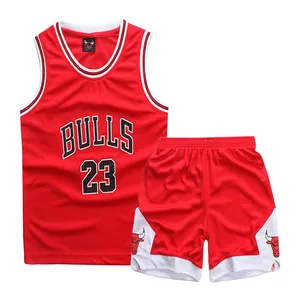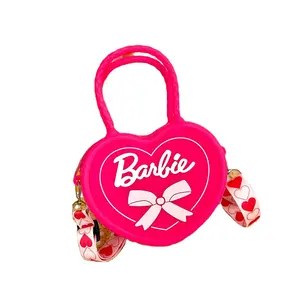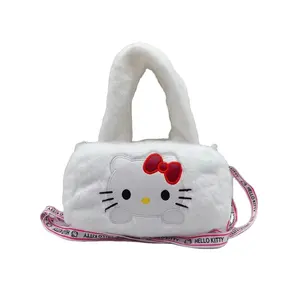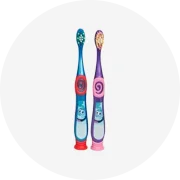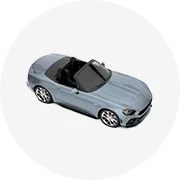Phổ biến trong ngành của bạn






Hot Bán Threaded Thanh Thép Cắt Lưỡi Thép Thanh Dao Kim Loại Máy Cắt Lưỡi
10,00 US$ - 30,00 US$
Đơn hàng tối thiểu: 100 Cái







Máy cắt tấm kim loại máy cắt điện để cắt thép
2.000,00 US$ - 2.500,00 US$
Đơn hàng tối thiểu: 1 Bộ
Vận chuyển mỗi chiếc: 6.000,00 US$







Máy cắt kim loại và hướng dẫn sử dụng máy cắt chém với iso& ce giấy chứng nhận
Sẵn sàng vận chuyển
500,00 US$
Đơn hàng tối thiểu: 1 Bộ
Vận chuyển mỗi chiếc: 45.950,00 US$







Máy Cắt Điện 1,5X1000 Máy Cắt Thép Tấm Kim Loại
1.700,00 US$
Đơn hàng tối thiểu: 1 Bộ
Vận chuyển mỗi chiếc: 6.000,00 US$








Chuyên Nghiệp Kéo Điện Công Cụ Cắt Kim Loại Sắt Kéo 500W 220V Công Cụ Điện Kéo Cắt Điện Carbon Thép Hợp Kim Nhôm
Sẵn sàng vận chuyển
26,00 US$ - 35,00 US$
Đơn hàng tối thiểu: 1 Cái
Vận chuyển mỗi chiếc: 24,88 US$






Kéo Điện KEN 500W 25Mm, Kéo Sắt Công Suất Cao, Dụng Cụ Điện 2625, 25 Dụng Cụ Cắt Thép Không Gỉ Gia Dụng, Kim Loại DC 16.8V
50,00 US$ - 70,00 US$
Đơn hàng tối thiểu: 1 Bộ






Kéo Cắt Kim Loại Bằng Thép CR-V, Kéo Thẳng Bên Trái Dùng Để Cắt Tấm Sắt
2,30 US$ - 2,66 US$
Đơn hàng tối thiểu: 360 Cái






Tùy ChỉNh Nóng bán cắt kéo cao su xử lý kim loại thẳng hàng không tin snip tấm cắt
2,48 US$
Đơn hàng tối thiểu: 5000 Cái





500W Xách Tay Mạnh Mẽ Điện Scissor Kim Loại Tấm Shears Để Cắt Thép/Màu Thép Ngói/Sắt/Nhôm/Đồng
Sẵn sàng vận chuyển
56,00 US$ - 57,60 US$
Đơn hàng tối thiểu: 1 Cái
Vận chuyển mỗi chiếc: 24,87 US$






Kéo Điện Chuyên Nghiệp Dụng Cụ Cắt Kim Loại Kéo Sắt 710W Công Cụ Điện Kéo Điện Để Bán
47,01 US$ - 49,48 US$
Đơn hàng tối thiểu: 10 Cái






Chuyên nghiệp 8 "10" 12 "đức tin snips đa-công cụ cắt sắt kéo kéo kéo kim loại
1,20 US$
Đơn hàng tối thiểu: 600 Cái
Vận chuyển mỗi chiếc: 1,87 US$






Ánh nắng mặt trời Hộ gia đình 10 "tin snips kim loại tấm thiếc kim loại snip cắt cắt kéo sắt tấm cắt cắt
3,44 US$ - 3,60 US$
Đơn hàng tối thiểu: 500 Đơn vị
Vận chuyển mỗi chiếc: 8,87 US$






10 Inch Kéo Chromium Vanadi Thép Tấm Kim Loại Hàng Không Tin Snip Scissor Cắt Kéo Cắt
0,98 US$ - 4,14 US$
Đơn hàng tối thiểu: 10 Cái
Vận chuyển mỗi chiếc: 5,04 US$






Nanwei 380n. M Đường Cong Thẳng Cắt Biến Tốc Độ Lithium Điện Kéo Cho Sắt Tấm Kim Loại Da Kéo Công Cụ Cắt
Sẵn sàng vận chuyển
73,27 US$
Đơn hàng tối thiểu: 2 Bộ
Vận chuyển mỗi chiếc: 50,00 US$






14 inch đa mục đích cắt thẳng công cụ cắt kim loại tin snips sắt cắt kéo với mùa xuân
2,68 US$ - 2,95 US$
Đơn hàng tối thiểu: 6 Cái






Hàng không tin cắt kim loại cắt mảnh cắt sắt Slice cắt đa mục đích tấm sắt cắt
Sẵn sàng vận chuyển
4,00 US$ - 5,00 US$
Đơn hàng tối thiểu: 100 Cái
Vận chuyển mỗi chiếc: 1,35 US$





Kéo Sợi TC-805 Đầy Màu Sắc Xử Lý Bền Cắt 105 Mét Chủ Đề Tông Đơ Thép Carbon Nhỏ Shears
0,12 US$ - 0,30 US$
Đơn hàng tối thiểu: 120 Cái





Tấm cắt mùa xuân kéo loại sắt để cắt sắt Đức PVC túi thiên nhiên thép không gỉ công cụ cắt thép carbon CR-V
2,73 US$ - 4,62 US$
Đơn hàng tối thiểu: 24 Cái






TY24222 Pistol Grip Air Shears Cắt Qua Tấm Kim Loại, Nhôm Và Nhựa Làm Cho Cắt Thẳng Và Đường Viền Với Cạnh Tối Thiểu
Sẵn sàng vận chuyển
27,00 US$
Đơn hàng tối thiểu: 1 Bộ
Vận chuyển mỗi chiếc: 20,69 US$






10 Inch Nhiệm Vụ Nặng Nề Tấm Kim Loại Cutter Cắt Kéo Tin Snips Sắt Tấm Kéo
Sẵn sàng vận chuyển
5,90 US$
Đơn hàng tối thiểu: 1 Cái
Vận chuyển mỗi chiếc: 13,65 US$






Kéo cắt kim loại đa chức năng mạnh mẽ thợ điện kéo chuyên nghiệp làm vườn cắt tỉa với mùa xuân Kéo cắt cáp
Sẵn sàng vận chuyển
0,43 US$ - 0,46 US$
Đơn hàng tối thiểu: 2 Cái
Vận chuyển mỗi chiếc: 15,00 US$






Máy Cắt Tấm Sửa Đổi Máy Cắt Tấm Khoan Điện Với Đầu Bánh Răng Kim Loại Đèn Cắt Tấm Sắt Nhôm
3,30 US$ - 4,50 US$
Đơn hàng tối thiểu: 2 Cái





Tay Cầm Bằng Gỗ Phần Cứng Dụng Cụ Làm Vườn Cắt Tỉa Kéo Cắt Nông Nghiệp
1,86 US$
Đơn hàng tối thiểu: 100 Cái






Kéo Cắt Kim Loại Đa Năng Cắt Kim Loại Tấm Thép Cacbon Kéo Công Nghiệp
Sẵn sàng vận chuyển
0,85 US$ - 1,20 US$
Đơn hàng tối thiểu: 10 Cái
Vận chuyển mỗi chiếc: 8,00 US$





Không chổi than điện cầm tay thép tấm sắt công cụ cắt không dây kéo điện để cắt thép không gỉ
78,00 US$ - 98,00 US$
Đơn hàng tối thiểu: 2 Bộ
Vận chuyển mỗi chiếc: 23,73 US$






SOLUDE Công Nghiệp Lớp Chất Lượng Cao Chrome Vanadi Hàng Không Tin Snips CR-V Tấm Sắt Cắt Kéo
Sẵn sàng vận chuyển
12,00 US$ - 15,00 US$
Đơn hàng tối thiểu: 2 Cái
Vận chuyển mỗi chiếc: 24,38 US$



Máy Cắt Tấm Sắt Snip 12in 10in Thẳng
Sẵn sàng vận chuyển
7,00 US$ - 8,00 US$
Đơn hàng tối thiểu: 10 Cái
Vận chuyển mỗi chiếc: 4,75 US$






Kìm Cắt Thiếc Điện Đa Năng Cắt Kim Loại Gạch Thép Cacbon Kéo Công Nghiệp Tấm Sắt
60,00 US$ - 65,00 US$
Đơn hàng tối thiểu: 1 Bộ






Cấp công nghiệp chất lượng cao Chrome Vanadi hàng không tin snips CR-V sắt tấm cắt kéo
1,83 US$ - 3,80 US$
Đơn hàng tối thiểu: 2 Cái






Chuyên nghiệp công nghiệp thép không gỉ Shears Keel Cutter tin snips kim loại tấm cắt kéo
Sẵn sàng vận chuyển
1,00 US$ - 1,55 US$
Đơn hàng tối thiểu: 2 Cái
Vận chuyển mỗi chiếc: 4,34 US$






Tay Công Cụ Cắt Carbon Thép Xử Lý Tin Snips Cắt Kéo Để Cắt Tấm Sắt Kim Loại
Sẵn sàng vận chuyển
3,90 US$ - 4,90 US$
Đơn hàng tối thiểu: 10 Cái
Vận chuyển mỗi chiếc: 9,83 US$




10Inch Tay Công Cụ Cắt Carbon Thép Xử Lý Tin Snips Cắt Kéo Để Cắt Tấm Sắt Kim Loại
2,70 US$ - 5,25 US$
Đơn hàng tối thiểu: 6 Cái






Kéo Cắt Đa Năng Chất Liệu Thép Cacbon Chất Lượng Cao Kéo Cắt Tấm Sắt Kéo Cắt Kim Loại Thiếc
4,02 US$ - 4,12 US$
Đơn hàng tối thiểu: 1000 Cái
Vận chuyển mỗi chiếc: 210,54 US$






Kéo Cắt Thiếc Chuyên Nghiệp Đức Kéo Cắt Sắt Đa Năng Kéo Cắt Thiếc Hàng Không Sắc Bén Kéo Cắt Tấm
1,58 US$ - 2,01 US$
Đơn hàng tối thiểu: 100 Cái






Bền Nặng Tin Kéo Cắt Kim Loại Kéo Sk5 Lao Động Tiết Kiệm Cắt Mỏng Thép Không Gỉ Sắt Tấm Tấm Lớn Bán
7,00 US$ - 7,50 US$
Đơn hàng tối thiểu: 2 Cái
Vận chuyển mỗi chiếc: 109,26 US$






Chất Lượng Cao Carbon Vật Liệu Thép Đa Chức Năng Kéo Đức Loại Tấm Sắt Kéo Tin Snip Cắt Kim Loại Kéo
3,00 US$ - 20,00 US$
Đơn hàng tối thiểu: 10 Cái
Vận chuyển mỗi chiếc: 5,13 US$





Kéo Cắt Tấm Thiếc Cắt Kim Loại Hàng Không Kéo Cắt Tấm Sắt Dụng Cụ Cầm Tay Gia Dụng Công Nghiệp Đa Năng Công Nghiệp
2,25 US$ - 2,28 US$
Đơn hàng tối thiểu: 100 Cái
Vận chuyển mỗi chiếc: 35,46 US$






Máy Cắt Kim Loại Tấm Hai Đầu Dụng Cụ Cưa Máy Cắt Điện Tiết Kiệm Công Sức Dụng Cụ Cắt Đục Lỗ Cho Tấm Sắt Kèm Cờ Lê
Sẵn sàng vận chuyển
4,82 US$ - 6,02 US$
Đơn hàng tối thiểu: 18 Cái
Vận chuyển mỗi chiếc: 3,12 US$
Các danh mục hàng đầu
Giới thiệu về kéo cắt kim loại sắt
Nếu bạn đang tìm kiếm người bạn đồng hành âu yếm hoàn hảo cho con, cháu gái hoặc cháu trai của mình, thì không đâu khác ngoài Alibaba.com để có được điều tốt nhất. kéo cắt kim loại sắt. Có sẵn với nhiều loại màu sắc và giống đáng yêu như mèo, gấu, chó, voi, chim, hổ, v.v. những cái này. kéo cắt kim loại sắt chắc chắn sẽ làm hài lòng trẻ em và trẻ em ở mọi người lớn như nhau .. kéo cắt kim loại sắt là một món đồ chơi quan trọng để trẻ em nuôi dưỡng sự đồng cảm và cũng hoàn hảo để món quà cho một người quan trọng khác.
. kéo cắt kim loại sắt được cung cấp trên Alibaba.com được làm từ những vật liệu chất lượng tốt nhất đã trải qua các vòng kiểm tra an toàn để đảm bảo sức khỏe của người dùng. Chúng không có bất kỳ nhựa hoặc dây sắc nhọn nào bên trong và được thiết kế đặc biệt để đảm bảo rằng chúng không gây kích ứng da. Những cái này. kéo cắt kim loại sắt được thiết kế để nhẹ cũng như mềm và dễ mang theo. Một số. kéo cắt kim loại sắt cũng cung cấp các tính năng hấp dẫn bổ sung như khả năng tạo âm thanh và thậm chí ghi âm tin nhắn thoại.
kéo cắt kim loại sắt có sẵn ở nhiều loại và bộ sưu tập khác nhau, chẳng hạn như vật nuôi trong nhà, động vật biển và động vật có nguy cơ tuyệt chủng. Những cái này. kéo cắt kim loại sắt rất phù hợp để làm quà tặng và có sẵn ở các kích thước nhỏ cho nhà trẻ cũng như các kích thước lớn hơn có thể lên đến vài feet .. kéo cắt kim loại sắt liên quan đến phim hoạt hình và các bộ phim hoạt hình cũng được cung cấp và chắc chắn sẽ là một hit với trẻ em.
Chọn giá mềm nhất. kéo cắt kim loại sắt cho con bạn hoặc cho mục đích tặng quà trên Alibaba.com với giá thấp nhất mà không ảnh hưởng đến chất lượng .. kéo cắt kim loại sắt người bán buôn và nhà cung cấp cũng chắc chắn tìm thấy ISO và các sản phẩm được chứng nhận CE với giá cả phải chăng khi mua số lượng lớn. Hãy yên tâm rằng các sản phẩm được cung cấp bởi những người bán và nhà sản xuất đáng tin cậy nhất, đều đã được kiểm tra an toàn.
. kéo cắt kim loại sắt được cung cấp trên Alibaba.com được làm từ những vật liệu chất lượng tốt nhất đã trải qua các vòng kiểm tra an toàn để đảm bảo sức khỏe của người dùng. Chúng không có bất kỳ nhựa hoặc dây sắc nhọn nào bên trong và được thiết kế đặc biệt để đảm bảo rằng chúng không gây kích ứng da. Những cái này. kéo cắt kim loại sắt được thiết kế để nhẹ cũng như mềm và dễ mang theo. Một số. kéo cắt kim loại sắt cũng cung cấp các tính năng hấp dẫn bổ sung như khả năng tạo âm thanh và thậm chí ghi âm tin nhắn thoại.
Chọn giá mềm nhất. kéo cắt kim loại sắt cho con bạn hoặc cho mục đích tặng quà trên Alibaba.com với giá thấp nhất mà không ảnh hưởng đến chất lượng .. kéo cắt kim loại sắt người bán buôn và nhà cung cấp cũng chắc chắn tìm thấy ISO và các sản phẩm được chứng nhận CE với giá cả phải chăng khi mua số lượng lớn. Hãy yên tâm rằng các sản phẩm được cung cấp bởi những người bán và nhà sản xuất đáng tin cậy nhất, đều đã được kiểm tra an toàn.

